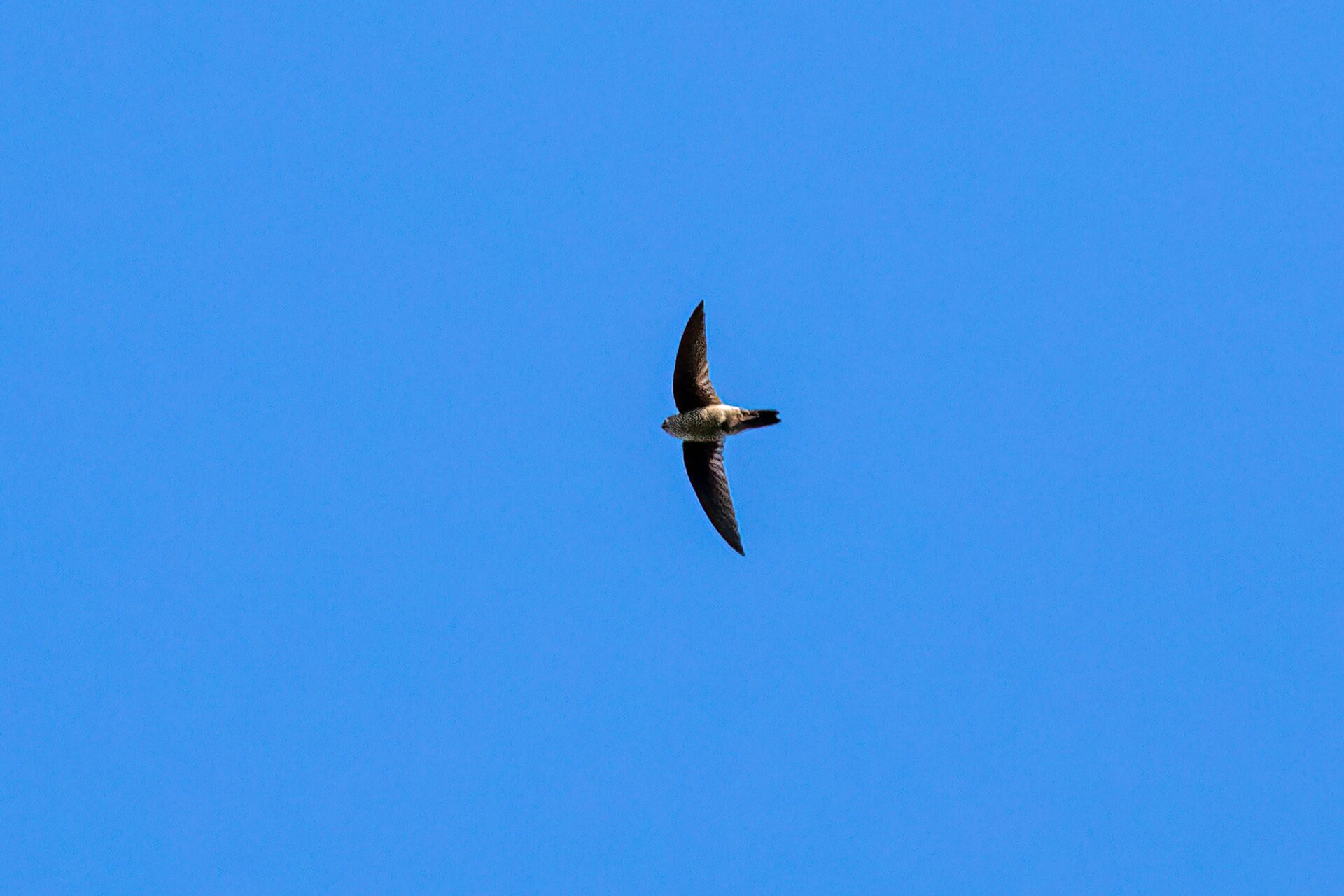The Australian Swiftlet is a common sight for many people living in or visiting tropical Queensland. It is a resident and breeds in caves and gorges. The subspecies chilagoensis is found inland in the Chillagoe, Palmer and Mitchell districts. It is slightly smaller and paler and it has been suggested as a full species but this is not generally accepted.

In addition to this species, several other swiftlets are vagrants or potential vagrants to northern Australia but they are very difficult to identify away from their breeding sites and many of these reports have not been confirmed.
My first encounter with this species was back in 1981, soon after arriving in Australia. We had gone on a trip to Eungella and on the way up called in at Finch Hatton Gorge. Flocks of Australian Swiftlets were flying above us as we walked up the gorge. We saw that many of the swiftlets were flying into a cave so we moved up to the entrance. It was pitch black inside but I could hear the swiftlets “clicking”. I had no torch so I put the flash up on my camera and took a few randomly-aimed shots, not expecting much to come from them. This was in the days before digital cameras so I couldn’t afford to take dozens of images and I had to wait several weeks before I got the results back. One at least showed the birds in flight, approaching their nests.

It has been reported that these swiftlets enter the caves at speeds of up to 111 k/hr and can control their wings asynchronously to allow tight turns in the caves.
Bats are well known to use echo-location to navigate in the dark but two groups of birds can also do this: one is the Oilbird Steatornis caripenis of south America and the other is the swiftlets. Most echolocating bats use ultrasonic frequencies, way above the human hearing range but birds use lower frequency sounds, audible to humans and produced by the bird’s syrinx. In swiftlets, most energy of the “click” is between 1 and 10 kHz. Some swiftlets produce a single click but most, including the Australian Swiftlet, produce double clicks.
There are about 26 species of swiftlets: echolocation has been confirmed for 16 across two genera Aerodramus and Collocalia; at least 3 species do not echolocate and the echolocation abilities of others are uncertain. Some swiftlets click while hunting for prey in low-light situations but in most species its use is confined to approaching their nest in darkness.
References:
- Brinklov, S, Fenton, M.B. and J.M. Ratcliffe. 2013. Echolocation in Oilbirds and swiftlets. Front. Physiol. 4:123.
- Chantler, P. and G. M. Kirwan (2020). Australian Swiftlet (Aerodramus terraereginae), version 1.0. In Birds of the World (J. del Hoyo, A. Elliott, J. Sargatal, D. A. Christie, and E. de Juana, Editors). Cornell Lab of Ornithology, Ithaca, NY, USA. https://doi.org/10.2173/bow.ausswi1.01
- Tarburton, M. (2012). Swift manoeuvres: how nesting Australian Swiflets beat La Niña floodings. Australian Birdlife. 1(3): 26-29.


